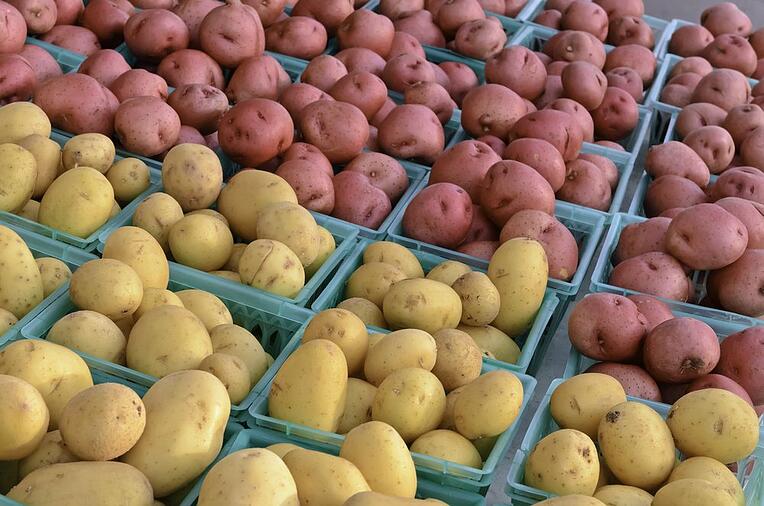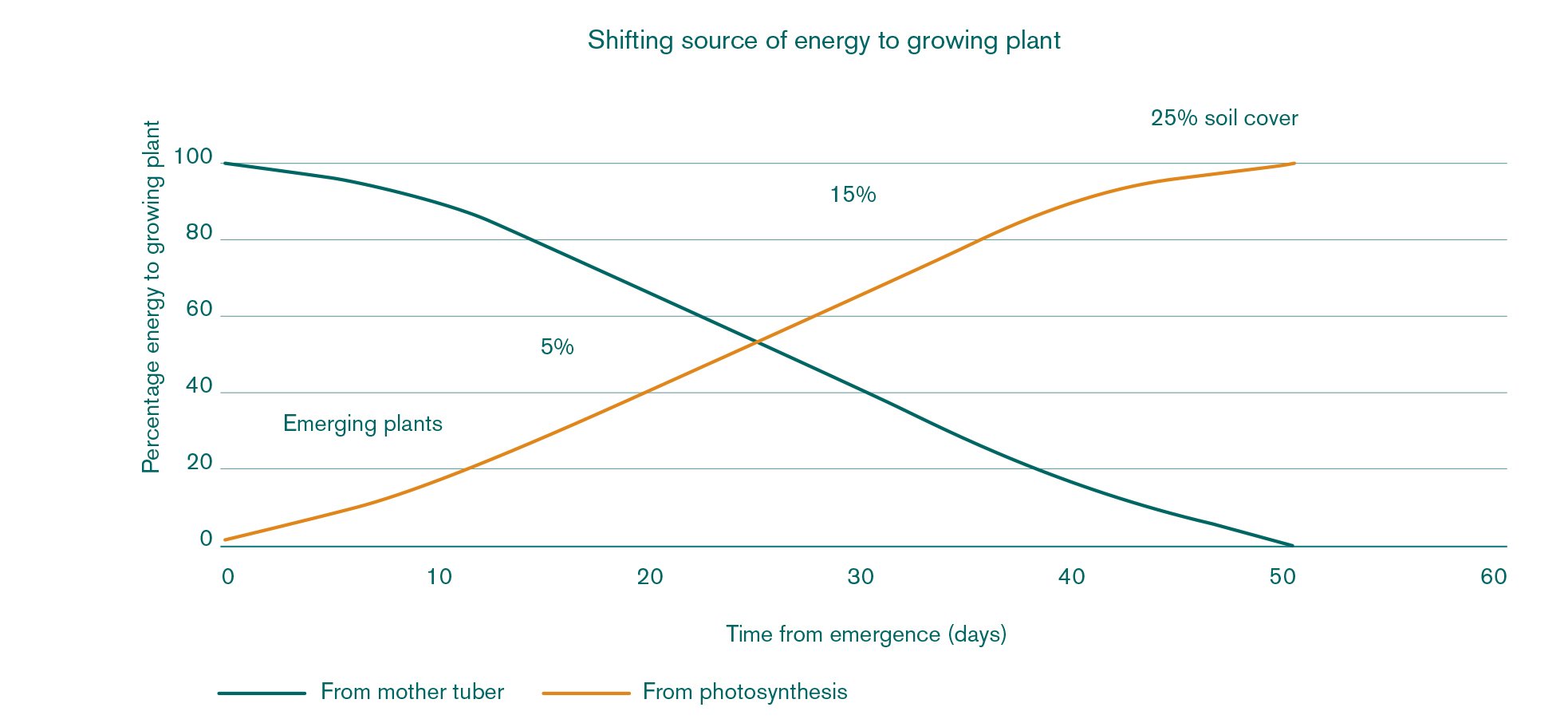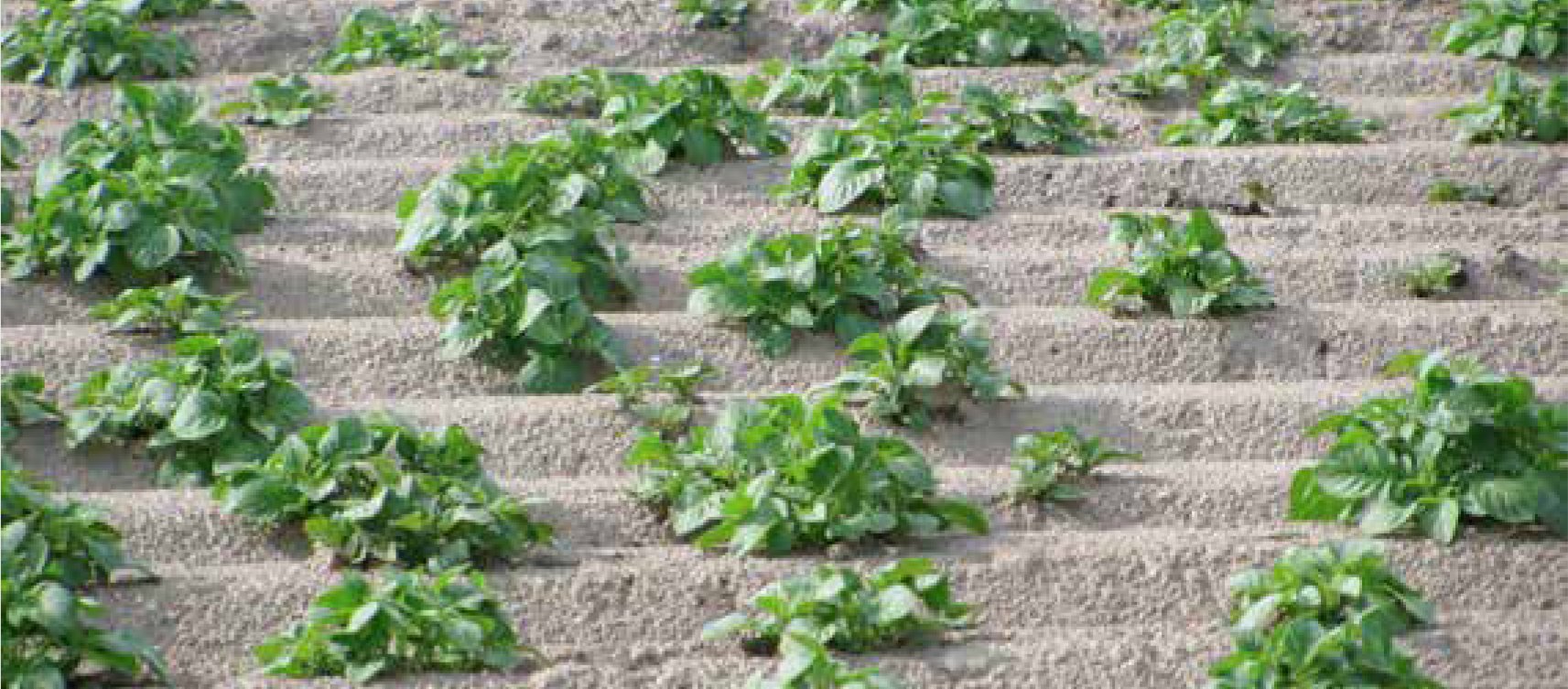
Besides day length, temperature is the other main factor for (driven) potato crop development. Below a base temperature between 2 and 4 ⁰C, all physiological processes in the potato plant and the tuber come to a standstill. When respiration is practically zero, no growth can take place as photosynthesis does not produce glucose because enzyme activities are zero.
Above the base temperature, all physiological processes pick up speed with a temperature quotient (Q10) of about 2.5. This means that with each 10 ⁰C increase in temperature, biochemical and plant physiological processes take place 2.5 times faster. At low temperatures between 4 and 18 ⁰C, this is conducive to development and growth as respiration efficiency increases.
Sprout growth
Dormant tubers, however, remain dormant and sprouting tubers, when planted in a cold soil below 4 ⁰C, do not emerge, as sprout growth halts. After planting, higher but not prohibitive temperatures lead to faster remobilization of sugars derived from starch in the tubers to the growing sprouts, emerging stems, and expanding leaves. This causes a faster sprout growth and emergence, earlier leaf formation and extension, canopy development, and radiation interception. In general, mother tubers stop delivering sugars to the growing sprouts when about a quarter of the soil is covered by green leaves. After that it is the sun’s turn. By then the mother tuber has exhausted its supply of starch and protein it had to redistribute to the next generation.
Photosynthesis
From then on, interception of solar radiation and photosynthesis are responsible for potato plant growth. Higher temperatures favor distribution of dry matter to the foliage rather than to the tubers. Hence, more foliage develops at relative higher temperatures, leading to later maturing crops, later when time is expressed as temperature sum. At high prohibitive temperatures of 28–33 ⁰C, respiration increases at such a speed that the dry matter loss becomes equal to the dry matter gain in photosynthesis. In consequence, growth, i.e. dry matter accumulation, stops. Radiation use efficiency (RUE) is the amount of dry matter produced per unit of solar radiation intercepted by the crop. This is the result of photosynthesis which fixes dry matter (sugars) and respiration that releases CO2. In these processes reduction of CO2 takes place followed by respiration or oxidation that produces CO2. Thus, when the average day-night temperature is above 28 ⁰C, no dry matter is produced (respiration exceeds photosynthesis), the RUE is zero, and no dry matter is distributed to the tubers anymore. Consequently, the tubers stop growing.

The energy and sugars needed for sprout growth before emergence, and initial leaf and stem growth of the new plant are derived from the mother tuber. Gradually, light interception and photosynthesis take over and the mother tuber’s role ends when the soil is covered for around 25% with green leaves.

Non-emergence is due to diseases such as Rhizoctonia or Fusarium, or to very old seed potatoes which produce little potatoes at non-emerging seed tubers
Want to learn everything about the potato? Our handbook is a Global Potato university in 1 book!
Buy your copy today and get a 1 year free subscription to Potato world magazine.

